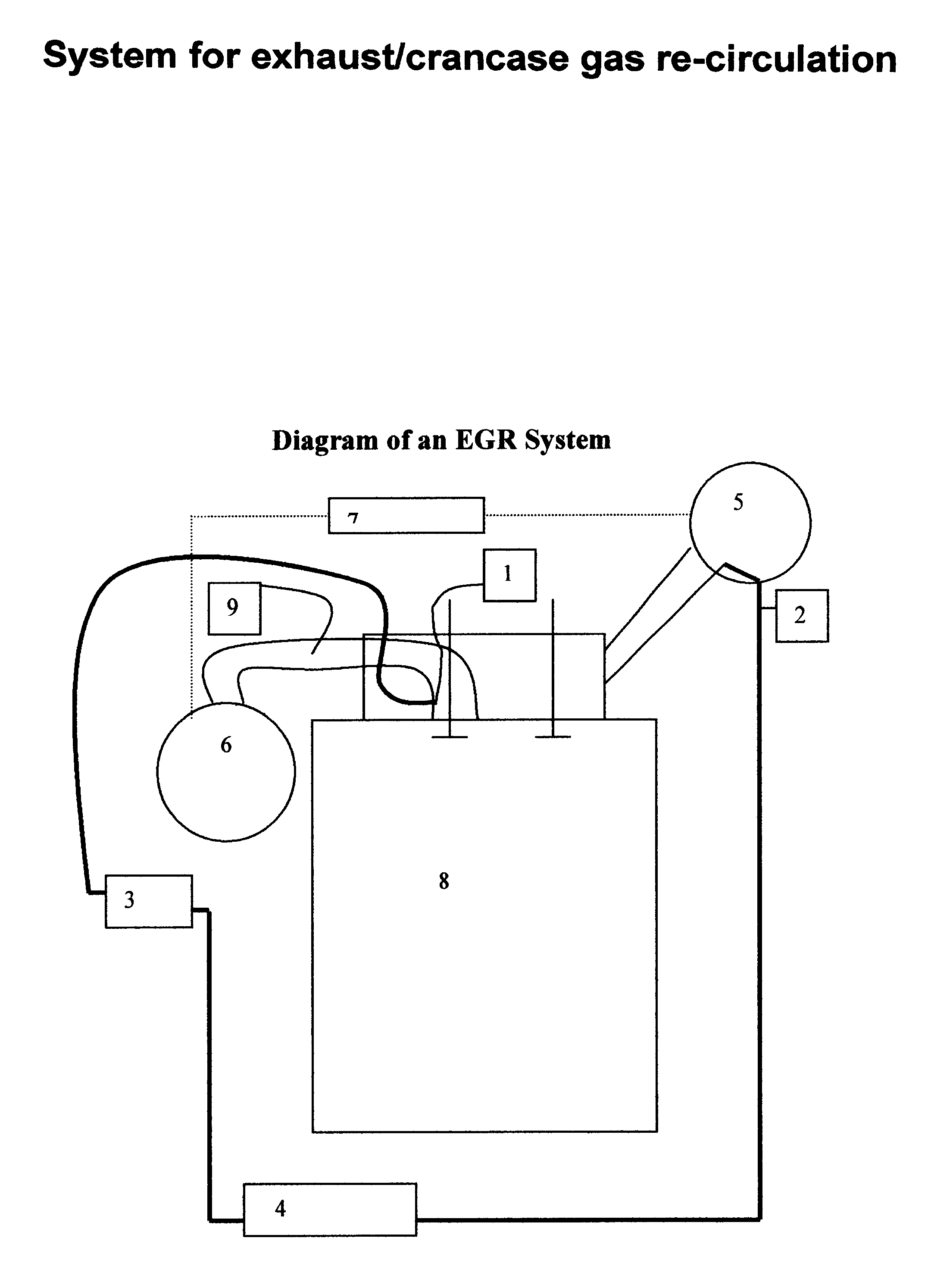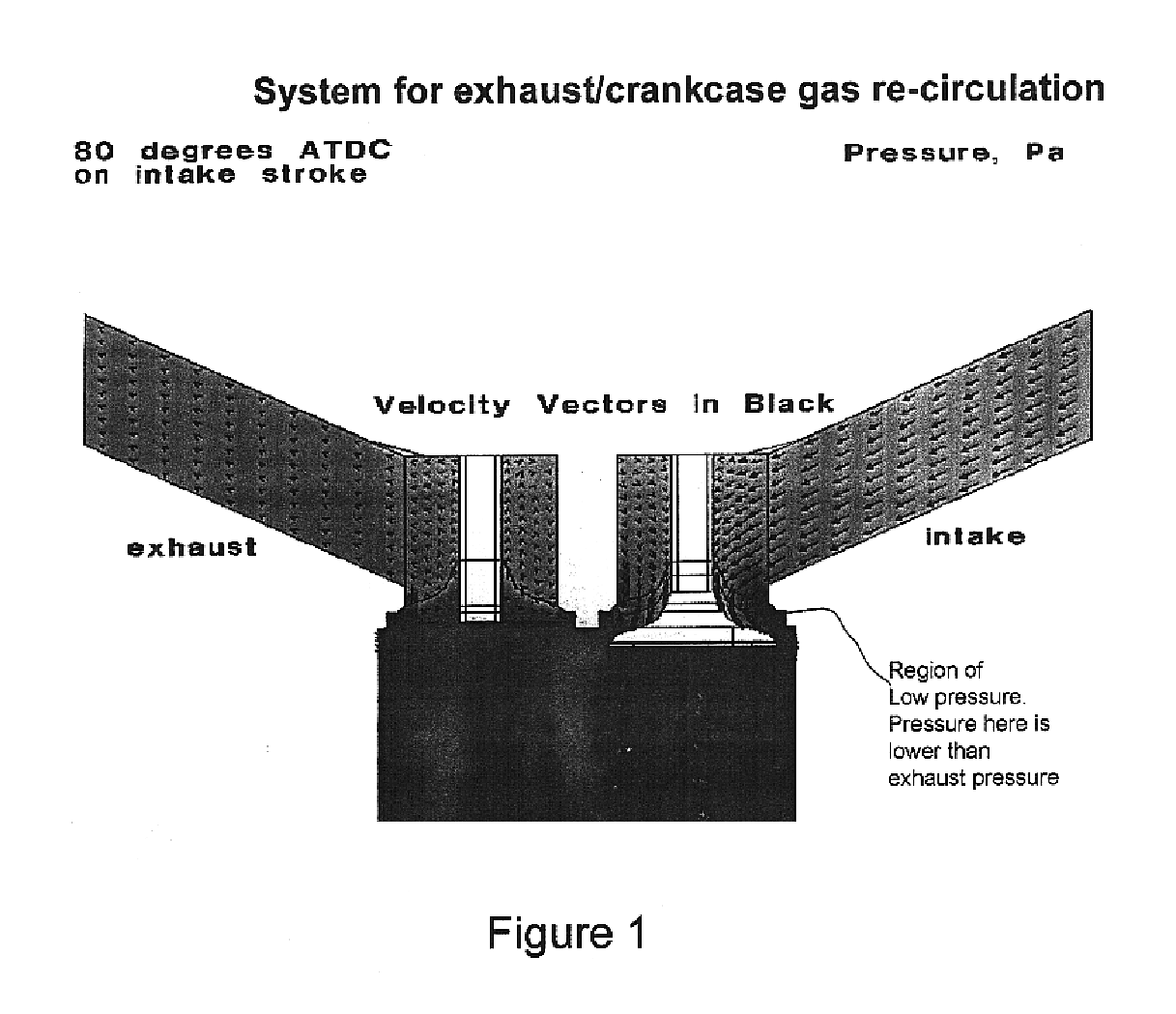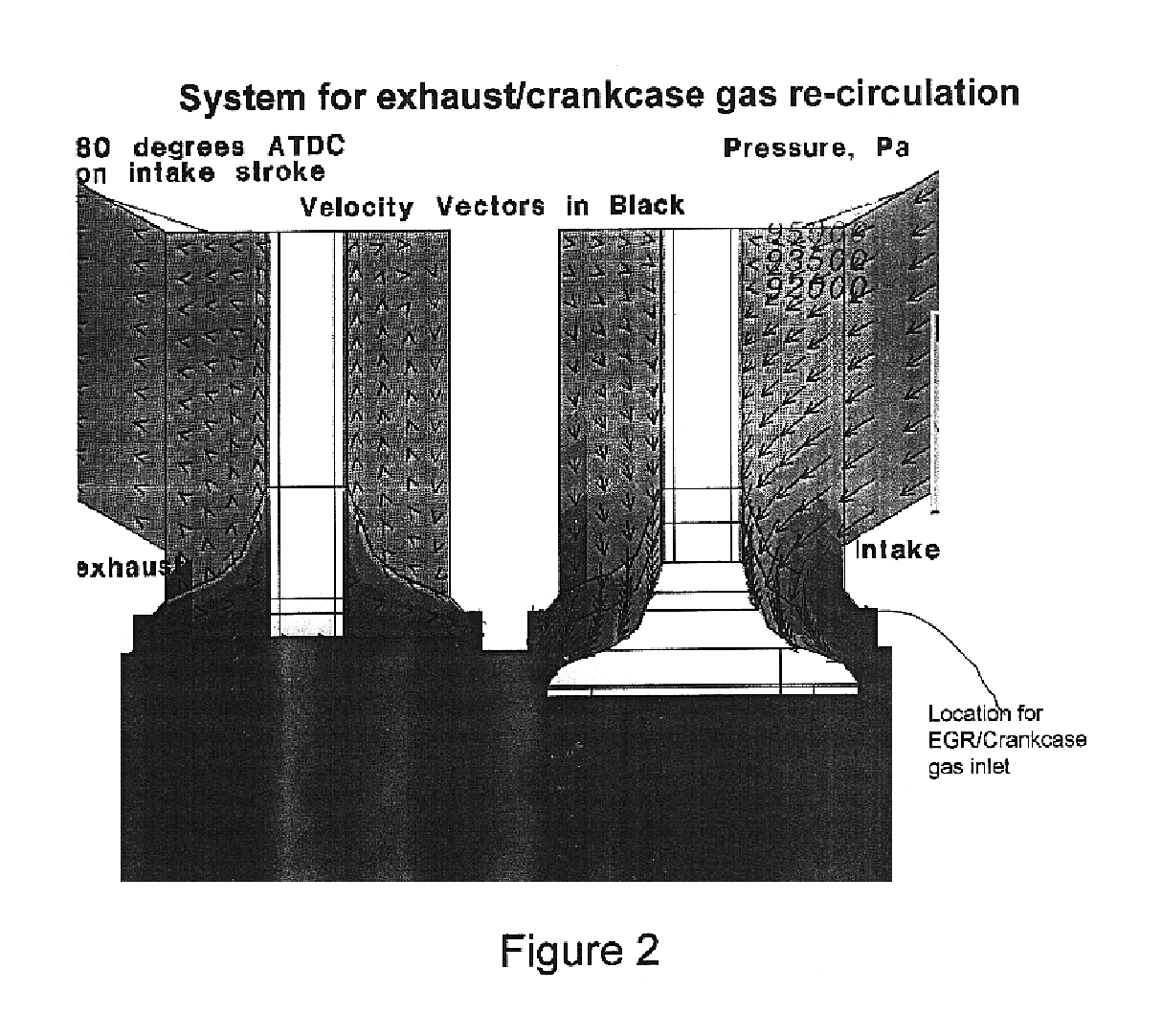System for exhaust/crankcase gas recirculation
a technology of exhaust gas recirculation and crankcase, which is applied in the direction of machines/engines, mechanical equipment, non-fuel substance addition to fuel, etc., can solve the problems of poor transient response performance of internal combustion engines, requiring a pumping arrangement or venturi arrangement, and increasing complexity and penalty in fuel consumption. , to achieve the effect of reducing pressure, reducing pressure, and high intake air velocity
- Summary
- Abstract
- Description
- Claims
- Application Information
AI Technical Summary
Benefits of technology
Problems solved by technology
Method used
Image
Examples
Embodiment Construction
The present invention will be described hereinafter with reference to the preferred embodiments thereof in conjunction with the accompanying drawings. First referring to FIG. 3, indicated at 8 is an internal combustion engine; 9, an intake port and 5 and exhaust manifold. The intake port 9 and exhaust manifold 5 are connected to each other by means by means of a recirculation pipe 2, EGR cooler 4 and exhaust gas control valve 3. To introduce EGR into the system, exhaust gas is drawn from the system before the turbocharger 5 and led through the pipe 2 into an EGR cooler 4. From there the exhaust gas is fed through the control valve 3, which regulates the quantity of EGR into the intake port / s location 1.
The operation of the crankcase gas arrangement is shown in FIG. 4. Blowby gas 2 from the crankcase is directed into the oil separator 3. From there the crankcase gas is led to the intake port location 1 above the valve seat area. This will ensure a positive flow of crankcase into the ...
PUM
 Login to View More
Login to View More Abstract
Description
Claims
Application Information
 Login to View More
Login to View More - R&D
- Intellectual Property
- Life Sciences
- Materials
- Tech Scout
- Unparalleled Data Quality
- Higher Quality Content
- 60% Fewer Hallucinations
Browse by: Latest US Patents, China's latest patents, Technical Efficacy Thesaurus, Application Domain, Technology Topic, Popular Technical Reports.
© 2025 PatSnap. All rights reserved.Legal|Privacy policy|Modern Slavery Act Transparency Statement|Sitemap|About US| Contact US: help@patsnap.com



